#feministfriday episode 375 | In colour
Good afternoon everyone,
I hope you are well! I hope you are excited for a Fem Fri special investigation today. I really found myself down a rabbit hole of borderline relevant research this week, and I thought that you might want to know about some of it. There's also a normal Fem Fri afterwards!
This rabbithole started when I read a reference (in "Benjamin Button") to a pink shirt for a little boy. I've read, on the internet, as I'm sure you have, that pink used to be "the colour" for a boy and blue used to be "the colour" for a girl. I cheerfully made a note to footnote this, thinking, ah this is great, super easy, I'll find that reference and put this fact in there.
Reader.
It was not super easy!
The most common reference is to a 1918 copy of a magazine/catalogue called Earnshaw’s Infants’ Department. This is not available online, nor are there copies going back to 1918 in either the British Library or the Library of Congress. Already, it makes me a bit nervous that something is being referenced that I have genuinely no idea how to get access to.
No matter, though, because something that is nicely archived and online is Time magazine! You might also have read that in 1927 Time did a piece showing that according to "major US department stores" pink was the colour for boys. Okay great let's look at what they actually say:
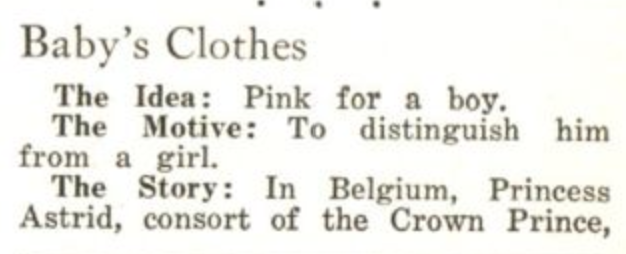
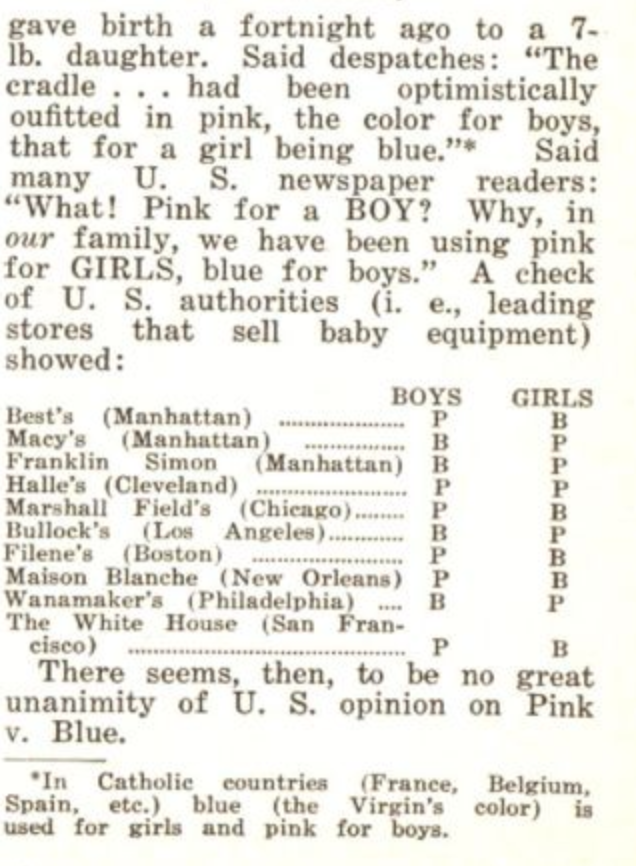 Time, November 14, 1927
Time, November 14, 1927
Mmmmn. They literally tell you not to draw a conclusion from this, so I'm going to follow that instruction, and instead I'm going to cast the net wide and stick "pink for boys" as a search term in newspapers.com. PAYDIRT:
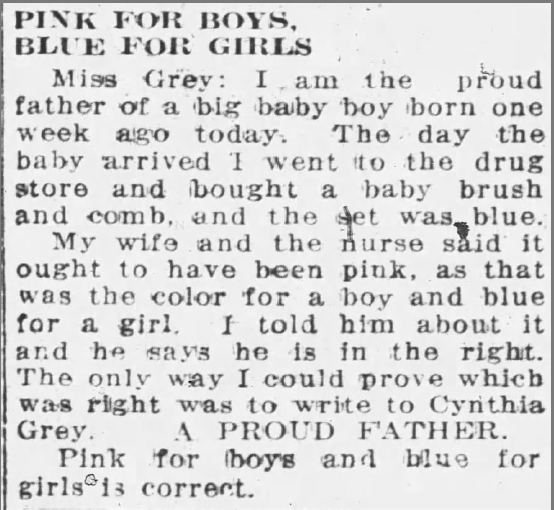 LA Evening Post-Record, 29th March 1918
LA Evening Post-Record, 29th March 1918
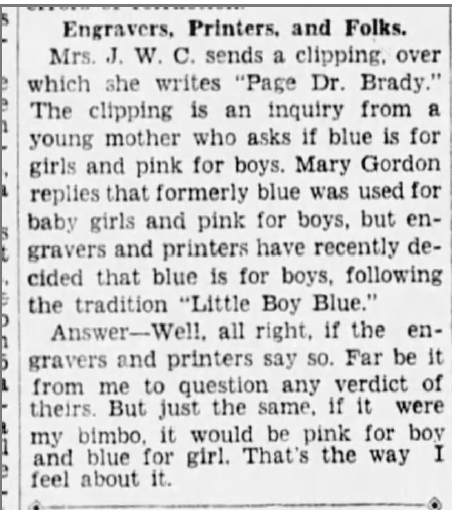 Harford Courant, 11th April 1928 (also… bimbo? I mean it makes sense now I think about it!)
Harford Courant, 11th April 1928 (also… bimbo? I mean it makes sense now I think about it!)
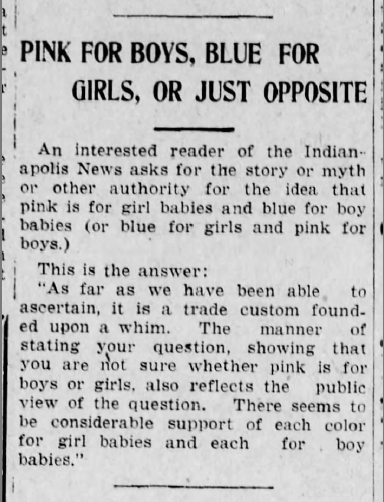 Altoona Tribune, 27th June 1923
Altoona Tribune, 27th June 1923
Although… not extremely conclusive paydirt. This is something that people argue about, and write to newspapers to settle! Honestly the clue should have been that this is written down at all in the form of an instruction; no media now would say "blue is for boys and pink is for girls", it's just assumed. There is no one who stands at a gender reveal party, festooned in pink glitter, just quickly googling what that means exactly.
It looks, overall, like the colour/gender mapping in the 1920s was similar to the question of what gifts you get on which wedding anniversary. You know that there is a convention, you know that it might apply to you or to your friends at some point, but you can't say exactly what the convention is without looking it up. Similarly, it is a convention that is designed to sell stuff, but – for wedding anniversaries now and for gendered clothing then – in a more low key way than, e.g., the convention of buying one another gifts at Christmas time.
Now, let's have some links about women and colour!
Of course, you know I love the work of Ann Veronica Janssen and her use of colour, sometimes as the only thing in her art. Here's an interview:
It’s also about creating the feeling, the perception, of dissolving the limits of the architecture. There are no limits any more when you’re there. You have a vision, but it’s almost more internal than external: you’re in the light. When I started working with coloured mists, I thought it was interesting because it was like a zoom into a painting, a zoom into blue or orange or a combination. And that’s what I try to experiment with.

https://www.studiointernational.com/index.php/ann-veronica-janssens-interview-i-try-to-make-visible-the-invisible-hot-pink-turquoise-south-london-gallery
Now here are molas, incredible colour saturated textiles of the Guna people of the San Blas islands:
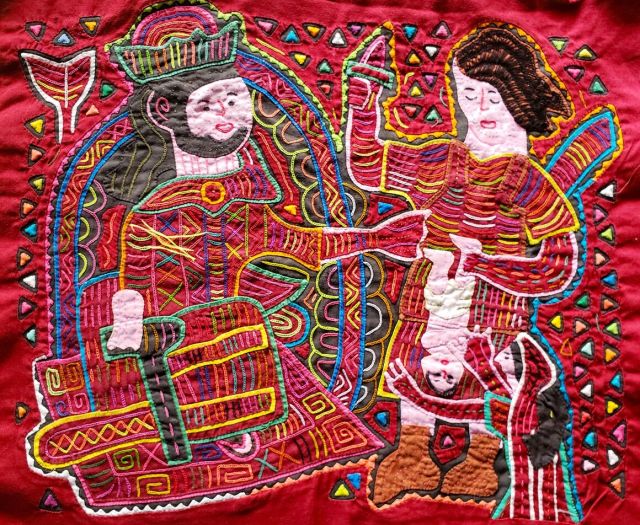
Molas are made using “reverse appliqué on several layers of cotton fabric,” says Rita Smith, owner of Rita Smith Molas Gallery. “It’s almost like when you’re making a sandwich,” she says. “Some require two layers, but some require more than two.” Once the fabrics are layered, the artist cuts away the top layer in a specific pattern to reveal the color beneath, and then sews along the edge of the cutout to secure the design. The artist repeats this again and again to form the design, a process that can take months. The technique has been passed down from mother to daughter for generations.
https://www.atlasobscura.com/articles/guna-mola-textile-revolution-history
And finally, a colour saturated poem by H.D. All gold and black and white:
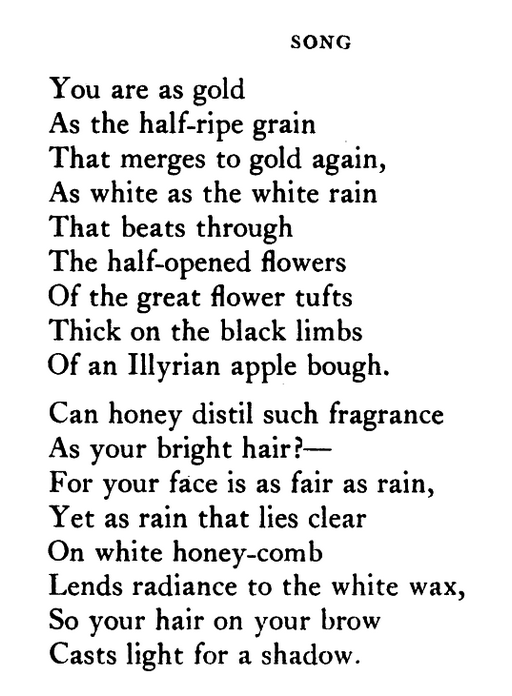
https://www.poetryfoundation.org/poetrymagazine/browse?contentId=15347
Have a beautiful weekend,
Alex.